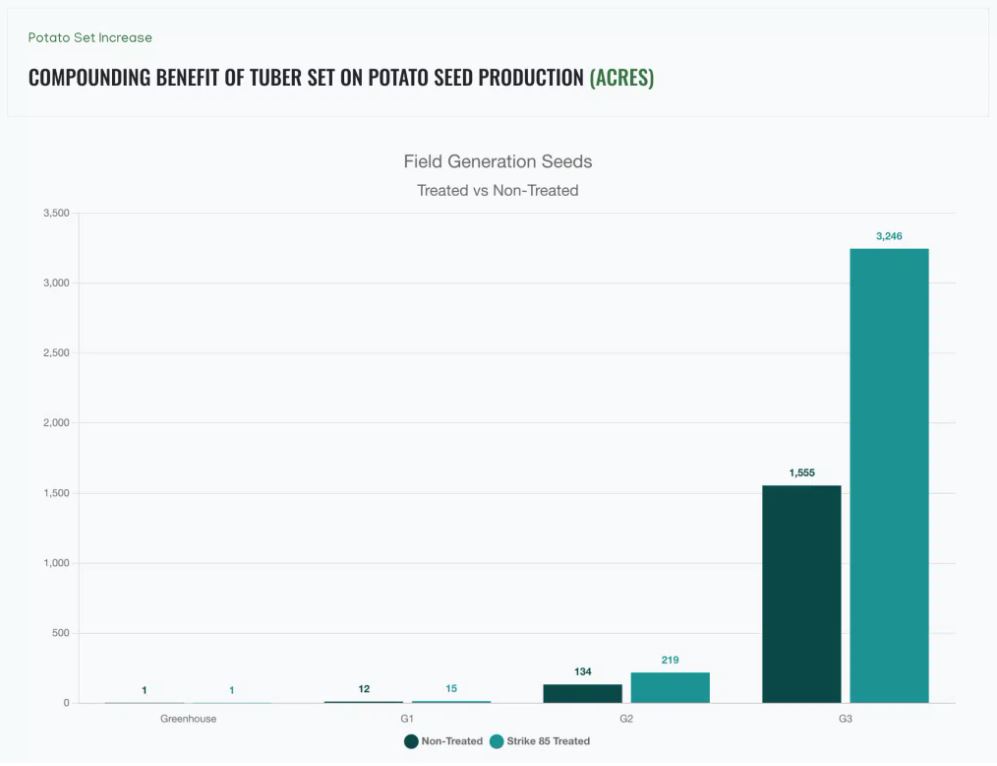Are you a potato seed farmer? Then this will be of interest to you.
We conducted a two-year trial comparing potatoes grown in soil where disease was managed with the soil fumigant Strike (active ingredient: chloropicrin) versus potatoes grown in soil that was not treated with Strike. Based on what we observed in the field regarding tuber set increase, we developed a model that incorporated the benefit of set increase from Strike in a seed production system. The model starts with a greenhouse grow-out that yields enough seed for a farmer to plant into one Strike-treated acre and one untreated acre. At the end of the first year of production, the farmer would produce enough seed from the treated acre to plant 15 acres, but only enough seed from the untreated acre to plant 12 acres. The 25 percent benefit from a Strike treatment in year one is impressive, but only the start.
Based on year one’s productivity in our model, we ran the numbers on how seed production would compound into future growing seasons. Our model assumes the grower: (1) kept growing out each subsequent season’s production, (2) wasn’t limited by available land, and (3) planted the tubers grown in treated soil back into treated soil and the untreated tubers into untreated soil. After two seasons in the field, untreated acres would produce tubers to plant 134 acres. In comparison, the Strike treated acres would produce 219 acres’-worth of seed (a 63 percent benefit). The real whopper comes after three seasons: if the grower replanted the second year’s production, the third-generation tubers that trace back to the original Strike treated acres would produce 3,246 acres-worth of seed, while the original untreated acres would produce just 1,555 acres-worth of seed.
Now, let’s consider the compounding impact of seed set on the crop’s costs and sales. The acres that originated with the Strike treated acre cost more to produce, both because of the Strike treatment cost and because there are far more of them. However, that additional cost is offset in a big way by the productivity gains and quality of the seed. Assuming $25/cwt, a grower who successfully produces 3,246 acres-worth of seeds rather than 1,555 would enjoy a substantial return on investment.
How are these gains possible? Potatoes are susceptible to a laundry list of common soil-borne diseases and pathogens that can compromise plant health, inhibit tuber growth uniformity and chip away at marketable harvest yields. Strike is a highly selective soil fumigant that allows maximum yield in two critical ways: it suppresses the bad (soil pathogens) while actively promoting the good (soil microbes that promote soil structure and nutrient cycling).
Visit https://strikefumigants.com/crops-potato-seed/ to learn more and see the charts or email us at info@strikefumigants.com.
This information was also shared in an article online: https://spudsmart.com/soil-fumigation-changes-the-game-for-potato-seed-farm-economics/
